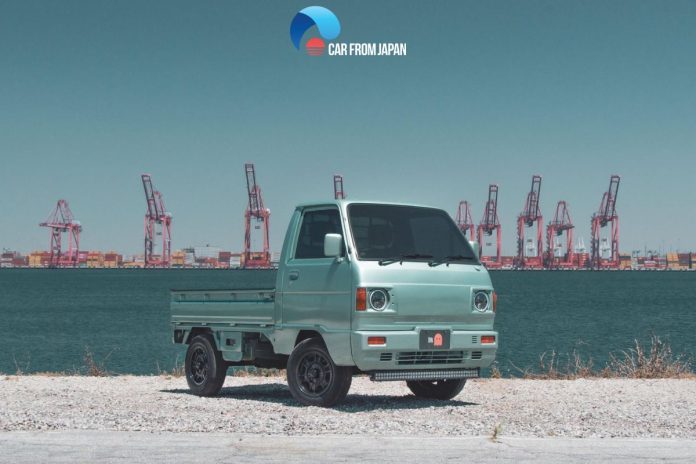Size matters, but often not in the way people think. Still, when it comes to utility and working vehicles, larger ought to equal better, right? At least in the Western world, people are used to even utility vehicles, such as pickup trucks, being large and powerful machines that can often drag entire boats behind them on the highway.
Yet, the Japanese mini kei trucks have been a mainstay in the land of the rising sun for about eighty years, and they have proven invaluable in carrying the Japanese economy from one economic boom to the next, including to this day.
What’s more, kei trucks have started making their way into the West, with more and more people importing them both into the US and in Europe every year, and even businesses working to offer repairs and parts for kei trucks in the West.
So, how is this mini truck so mighty? And why are Kei trucks the perfect utility vehicle that more people should know about? Here’s a quick guide to these fascinating vehicles.
Contents
What Is A Kei Truck?
“Kei truck” quite literally means “light truck” in Japanese, as the name for these vehicles there is kei-tora, light-truck. These compact, lightweight, and maneuverable vehicles are specifically made with engines no more powerful than a 660 cc four-stroke and with a carrying capacity of up to 770 lb (350 kg).
This is significantly less than what many modern Western pickup trucks are capable of carrying. And, clearly, some are carrying or towing jobs that a kei truck wouldn’t be suitable for. However, for any utility task of up to 770 lb, kei trucks are arguably the perfect vehicle, as that’s what they were designed for.
Back after the end of the Second World War, the Japanese government specifically created tax codes that gave tax breaks for people and businesses using lightweight and fuel-efficient vehicles to stimulate the economy in a cost-effective and efficient way.
And not only did it work in boosting every aspect of Japan’s post-war economy, but it established these little efficient workhorses as the main utility vehicle for individuals as well as for small and larger businesses in Japan, both in urban and in rural areas.
Still, what is it exactly that makes these small trucks so viable as work and utility vehicles?

The Benefits Of Kei Trucks
Kei trucks are incredibly maneuverable
Whether you want a vehicle for the tight and busy streets of an urban inner-city jungle or the tricky landscape of a rural farm, having a maneuverable utility vehicle is key. This is exactly what these small trucks offer as they can fit into places a larger American truck can only dream of, and they can take tight turns that would be impossible for most other vehicles.
These mini trucks can be used for almost anything
Intended as cargo-carrying workhorses, these small vehicles can do much more than just taking stuff from Point A to Point B. Kei trucks can be used as personal utility vehicles, they can be used as the main transport trucks for many small and larger businesses, they can be used for agricultural tasks, they are great for off-road adventures (with the right mods), and they do great as general recreational vehicles.
Pretty much as long as you don’t need them to carry anything over 770 lb of weight, kei trucks can be the perfect choice.
Kei trucks are very affordable
Whereas modern Western pickup trucks often cost in the higher end of the 5-digit price range, kei trucks are typically priced in the lower 4 digits. This often means a 10-to-1 difference in price, which is a very difficult difference to ignore.
Even if you can expect to have cargoes north of 770 lb, it’s often more efficient to just get a couple of kei trucks instead of one American pickup truck; that’s how stark the price difference is.

Japanese mini trucks are also much more fuel-efficient than most Western vehicles
The standard kei truck, including decades-old models, usually has an mpg (miles per gallon ratio) of 30 to 40 or even up to 45, depending on the road conditions. This is much more efficient than most gas-guzzling Western trucks that have mpgs in the 6-8 range or up to 10-15.
All of the above makes these mini Japanese trucks one of the best choices for many individuals and businesses, even in the West. Importing a kei truck to your state or country can sometimes be tricky due to local legislations, but it’s almost always worth it when possible.



